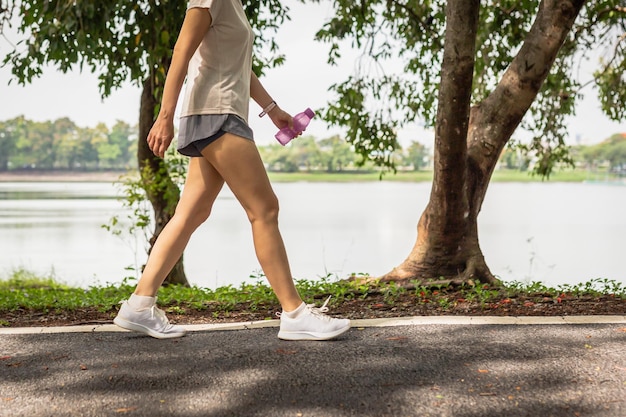Hi, I’m Lily! I’ve always known that exercise is good for us, but it wasn’t until a few years ago that I truly began to understand the impact of regular exercise on overall health. Whether you’re trying to feel more energised, manage stress, or just keep your body strong as you get older, incorporating exercise for health can be one of the best decisions you can make.
I’ll be honest: starting and sticking with a routine isn’t always easy. But with the right mindset and a few realistic tips, exercising for your health can become a natural, even enjoyable, part of life. Here’s what I’ve learned about the power of exercise and how you can use it to improve your well-being—physically and mentally.
Why Exercise for Health Matters

Before we get into the specifics, it helps to understand why exercise is so essential for health. Regular physical activity doesn’t just boost fitness levels—it benefits nearly every system in the body. From improving heart and lung function to supporting mental health and even helping with digestion, exercise is like a “miracle pill” that improves life at every level.
Whether you’re new to exercise or looking to refresh your routine, these exercise for health tips will guide you toward a healthier, happier life.
1. Make Walking Your Foundation
One of the simplest, yet most effective, forms of exercise for health is walking. Not only is it accessible to nearly everyone, but walking also has an impressive list of benefits. It strengthens your heart, boosts circulation, helps maintain a healthy weight, and can be incredibly relaxing.
Here’s how to make walking part of your daily life:
- Set small goals like a 10-minute walk around your neighbourhood and build up gradually.
- Take walking breaks if you work a desk job; even a 5-minute stroll can refresh your mind.
- Invite a friend or family member to join you. It makes exercise more enjoyable and can keep you accountable.
I started incorporating a 20-minute walk every day, and not only did I feel more energised, but I also noticed an improvement in my mood. Walking is a great way to ease into regular exercise without the pressure of an intense workout.
2. Incorporate Strength Training for Long-Term Health
Strength training often gets overlooked, but it’s one of the most effective forms of exercise for health—especially as we get older. Building muscle helps maintain balance, prevents injuries, and keeps bones strong. Plus, it boosts metabolism, which supports weight management and energy levels.
You don’t need fancy equipment to start:
- Use your own body weight with exercises like squats, lunges, and push-ups.
- Invest in a pair of dumbbells to add resistance to your workout.
- Try resistance bands for a low-impact way to build strength.
I started with basic body-weight exercises, doing squats, lunges, and push-ups a few times a week. Within a month, I felt stronger and noticed improvements in my posture and balance.
3. Prioritise Flexibility and Mobility Exercises
Flexibility and mobility exercises help keep your body moving easily and can prevent stiffness, pain, and injuries. Incorporating these exercises into your routine is particularly beneficial if you spend a lot of time sitting or have any joint discomfort.
Here’s how to get started:
- Do simple stretches each morning to gently wake up your muscles.
- Try yoga – It’s excellent for flexibility, strength, and mental relaxation.
- Include dynamic stretches like arm circles and leg swings to improve joint range of motion.
For me, starting each day with a few stretches and doing yoga once a week has helped reduce tension, especially in my back and shoulders. And as a bonus, it’s a great way to clear my mind.
4. Add Cardio Workouts for Heart Health
Cardiovascular exercise strengthens your heart and lungs and helps improve overall endurance. Whether it’s running, cycling, swimming, or a high-energy dance class, cardio exercises are excellent for boosting stamina and supporting long-term health.
Here are some ways to make cardio fun and doable:
- Choose activities you enjoy – dancing, cycling, hiking—whatever gets you moving!
- Set mini-goals like running for 5 minutes and gradually increase over time.
- Mix it up to keep things interesting—try a new class or route to avoid boredom.
For me, jogging in a local park has been a game-changer. It’s an effective way to get my heart rate up, and running outside always lifts my spirits.
5. Make Exercise Social for Motivation and Fun

Sometimes the biggest hurdle with exercise for health is staying motivated. Exercising with friends, family, or even joining a group class can keep you accountable, make workouts more enjoyable, and help you stick to your routine.
Tips for making exercise more social:
- Schedule a weekly workout with a friend, whether it’s a walk, a gym session, or an online class.
- Join a local sports team or fitness club—many communities have social leagues for all skill levels.
- Consider a group fitness class – From yoga to Zumba, these classes make exercise feel fun and energising.
Personally, I love meeting up with a friend for a weekend hike or taking a Pilates class together. Not only do we get a workout, but it’s also a great way to catch up and keep each other motivated.
6. Incorporate Rest and Recovery Days
Exercise for health isn’t just about working out—it’s also about giving your body the time it needs to rest and recover. Recovery days allow your muscles to repair and grow stronger while also reducing the risk of injury. Incorporating rest days has made a massive difference in my ability to stay consistent with exercise without burning out.
Here’s what I recommend for recovery:
- Take at least one rest day per week to allow your muscles to recover.
- Incorporate gentle stretching or light yoga on rest days to keep your body flexible.
- Listen to your body – If you feel overly sore or tired, it’s okay to take an extra day to rest.
Sometimes, taking a rest day is exactly what I need to come back to my workouts feeling refreshed and ready to push myself further.
7. Stay Consistent and Celebrate Small Wins
Consistency is one of the most important aspects of exercise for health. Building a regular routine, even if it’s just a few minutes each day, makes a huge difference in the long run. And don’t forget to celebrate your small achievements—these little victories help keep you motivated and remind you of the progress you’re making.
Ways to stay consistent and positive:
- Set realistic goals – Instead of aiming for perfection, focus on making gradual progress.
- Track your workouts – Keeping a record of what you’ve done can boost your confidence and keep you on track.
- Reward yourself for hitting milestones, whether that’s with a new pair of trainers or a relaxing day off.
When I first started, I’d celebrate each new personal best, whether it was running a bit further or adding an extra set to my strength workout. These moments kept me motivated and made exercising feel rewarding.
FAQs About Exercise for Health
1. How often should I exercise?
For most people, 3-5 days of exercise a week is ideal, with a mix of cardio, strength, and flexibility. But remember, anything is better than nothing—start where you can and build up from there.
2. How long does it take to see results?
Results vary, but with consistent effort, most people start noticing changes within 4-6 weeks. Remember that exercise benefits go beyond physical changes—it also boosts mood and energy from day one!
3. Can I exercise if I’m sore?
Light exercise like walking or gentle stretching is usually fine, but if you’re very sore, it’s best to give your muscles a day or two to recover fully.
Ready to Get Moving?
Exercise for health doesn’t have to be intimidating or overwhelming. Whether it’s a daily walk, gentle stretches, or a more structured workout routine, every movement helps. The key is to make it enjoyable and sustainable so that you’ll want to stick with it long-term.
What are your favourite ways to exercise? Or is there a specific goal you’re working towards? I’d love to hear about it in the comments below! And if you found these tips helpful, feel free to share this guide with friends or family members who are also looking to prioritise their health. Here’s to better health and a happier you!


